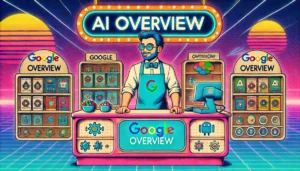Learn How to Thank Your Customers (and Get Feedback)
When was the last time you said a genuine “thank you” to a customer? Not the polite end to a conversation but an intentional moment of appreciation that builds trust and opens the door to valuable feedback. A simple thank-you isn’t just good manners—it’s smart business. Here’s how showing gratitude can strengthen relationships, improve loyalty,
When was the last time you said “thank you!” to a customer? And I’m not talking about that polite reply to end a conversation; I’m talking about that sincere “thank you!” that is intentionally communicated as an appreciation for the trust your customer has given to you as a business.
A heartfelt thank-you doesn’t just show appreciation—it opens doors to invaluable feedback that can help your business thrive. Now, more than just being grateful, we’re going to talk about how to use your “Thank You” as a window of opportunity to get valuable customer feedback.
But first let’s talk about why we should always start with gratitude.
The Importance of Saying “Thank You”
Saying thank you is more than a transactional courtesy—it’s an opportunity to build lasting relationships, nurture repeat business, and open the door to meaningful feedback that can drive your business forward. Here’s why this small yet significant act matters:
- Building Relationships: A genuine thank-you shows customers you value them. It’s not just about the sale; it’s about making them feel appreciated.
- Encouraging Loyalty: Gratitude creates goodwill, increasing the likelihood of repeat business. It also offers an ideal moment to share incentives like discounts.
- Gathering Honest Feedback: Many customers won’t volunteer their thoughts unless prompted. A thank-you paired with a feedback request can reveal hidden insights—whether it’s praise, constructive criticism, or confusion about your offerings.
How to Thank Your Customers Digitally
When done digitally, a thank-you message is not only a gesture of appreciation but also an opportunity to start a meaningful conversation. It opens the door for customers to share their thoughts, experiences, and suggestions—all while reinforcing their positive connection to your brand.
Let’s explore the ways you can express gratitude and seamlessly gather valuable feedback in the process:
- Personalized Thank-You Emails: Send a follow-up email thanking customers for their business. Keep the tone warm and authentic, not overly formal. You can use templates but always personalize by using the receiver’s name and adding a line of familiarity that removes the “template” nature of the email.
- Incentives for Feedback: Encourage responses by attaching a small incentive, such as a discount code for their next purchase or a chance to win a prize. If your product is digital, perhaps a free use coupon that covers a limited duration.
- Include Feedback Links:
- Use tools like Google Forms to provide a more robust feedback experience.
- Direct customers to Google Reviews to share their experience publicly. (organic reviews are valuable!)
- Offline Options for In-Person Businesses:
- For restaurants or hotels, provide a QR code on receipts that links to a survey.
- Offer feedback cards with a quick drop-off box.
- You can also use a calling card with the email address of someone important so customers feel that the feedback is not just going to end up in an inbox nobody reads.
Real-Life Applications
Thanking your customers and collecting feedback can look very different depending on your business model, but the principles remain the same: be genuine, make it easy, and add value where possible.
Here are a few ways businesses can do this effectively:
- E-commerce Websites: Include a “thank you” email after purchase, offering a discount code for completing a survey. Example: “We’d love to hear your thoughts! Complete our quick survey and enjoy 10% off your next order.” This can be automated if you use an email marketing app. One of our clients uses Mailerlite to actively engage with her audience.
- Hospitality Businesses: A hotel can email guests post-checkout, thanking them and inviting them to share feedback about their stay. Insights gathered could highlight areas of improvement like room cleanliness or staff courtesy. In cases where a guest might have had a bad experience, you can salvage the relationship by making them feel there is an opportunity to right any wrong.
- Service-Based Businesses: Freelancers or consultants can send thank-you emails post-project, asking clients for reviews or input on how to improve their services. Even if the project was successful, there might be helpful feedback that further improvement in your services.
Why Customer Feedback is a Goldmine
When a business is just starting, there’s a common practice of assuming what we think the customer wants. As business owners, we might tend to think we already know what is best and that the customer “doesn’t understand” how we run our business.
But here’s the reality, our customers are our best critics—and supporters. They are the ones who provide clarity where we are blind, offering insights that help us see what we might otherwise overlook. Here’s why their feedback is invaluable:
- Understanding Miscommunication: If customers misunderstand your services, that’s critical data. It could highlight the need to clarify your messaging or adjust your offerings.
- Uncovering Blind Spots: Feedback can shine a light on areas you didn’t know needed improvement, whether it’s slow service or a confusing website layout.
- Strengthening Your Brand: Acting on feedback shows customers you listen and care, building a stronger, more credible brand.
Avoiding the Cost of Inaction
Neglecting to thank your customers or collect their feedback is more than a missed opportunity—it can be a costly oversight. Businesses that fail to engage with their customers risk losing not only repeat business but also valuable insights that could drive growth.
- Lost Customers: Without follow-up, dissatisfied customers are less likely to return, and you lose the chance to address their concerns.
- Missed Insights: Feedback you never receive is a missed chance to improve and grow.
- Weakened Relationships: Silence after a purchase can make customers feel unimportant, affecting loyalty.
Tools to Simplify Thank-Yous and Feedback
Creating thank-you messages and gathering feedback doesn’t have to be time-consuming. Platforms like OneClickAI.pro can help craft professional, customized thank-you messages. Simply click an assistant and that assistant can help you structure a message with customizations specific to your business! You can take it a step further and find an assistant that BUILDS your feedback system for you!
OneClick AI is offering a 7 day free trial, so you can start working on those feedback systems for free!
SIGN–UP for OneClick AI 7 Day Free Trial
Thanking your customers isn’t just polite—it’s a smart business move. It fosters loyalty, invites valuable feedback, and strengthens your brand. By taking this simple step, you create a two-way conversation that benefits both you and your customers. Start small, stay consistent, and watch as gratitude turns into growth.








